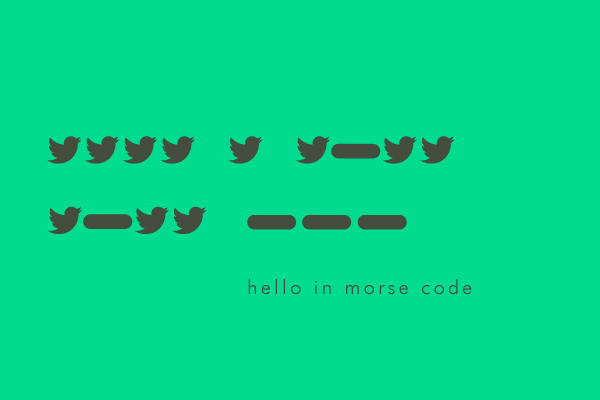Throughout human history, the evolution of the written word has been closely intertwined with innovations in technology. From hieroglyphics to the printing press to smart phones, the medium through which the written language is delivered has transformed language itself. Consider the assault of modern technology on language: e-mails are substituting the handwritten letter; “Txting” encourages flagrant syntax violations; and autonomous spell-checkers replace the need for a dictionary. Championing 21st century fast track communications, one particular medium thrives on the intentional avoidance of extensive descriptions and balks at the constraints of rigid grammarians. Propelling a new, unprecedented written form of expression--the limit of a mere 140 characters-- is the Tweet.
The Tweet is drastically changing language, but for better or for worse?
140 Characters? Sounds Preposterous. Spaces are included too?
140 is indeed the magic number. It is the maximum number of individual figures allowed for expression in a Tweet on Twitter. The Tweet is not a simple social media message--it is a dynamic literary instrument. The size, albeit restrictive, promotes a clever and versatile use of language. In turn, as the constraint is embraced, we discover the explosive potential of the 140-character limit.
There exists a startling misconception that rampant abuses of language, abbreviations, and neologisms found within Tweets are a sign that the current generation is exhibiting a decline in literacy. Yet, this couldn't be more far from the truth. The Tweet fosters creativity; it is a blank canvas, ready to be garnished with ingenuity. The Tweet is the social parallel of the haiku, disciplining the imagination to condense a complex idea into a linguistically constrained space. A Tweet can be a conglomeration of phrases, hashtags, as well as inventive and unconventional uses for existing words. It is more than the sum of its 140 parts: it is changing the way we communicate.
With the ability to go viral in a matter of seconds, the Tweet is taking written communication to a place never before imagined.
Tweets possess the unique capability to go viral in milliseconds whereas books take months from galley to text and, sometimes, years before they are widely read and appreciated. The process of publication runs against our growing demands for information now. Twitter is the olive branch that reconciles the written word and instant gratification.
Such a quick turnaround of information is unprecedented; the Twitter bird is the carrier pigeon of the 21st century.
Think back to 1776 when our founding fathers used a single written document, the Declaration of Independence, to dissociate America from the rule of the British. What if Twitter were around during such a crisis? Each citizen would possess the capability to have an opinion heard around the world as was the case with the Arab Spring uprising. So too were the anti-dictator revolution in countries such as Yemen and Egypt spearheaded by a digital Twitter campaign.
The Tweet is in the vanguard in the struggle against governmental oppression--perhaps the most compelling demonstration of the power of 140 characters.
To harness this power, businesses must also adopt the Tweet to capture the customer. Carefully crafted marketing sparking customer conversations are the key to success in age of Twitter. Can you search #MacBookPro in a print catalog or newspaper to find thousands of customers talking about your product?
A revolutionary new use for an old symbol, The Hashtag is extending the capacity of language.
The hashtag is Twitter's predominant linguistic innovation. Originally only used as the pound sign on the telephone, or the number symbol, the hashtag has revolutionized shorthand communications. Adding a #Hashtag before any word has become a way to amplify your brand, give words a dynamic emphasis never before exploited in the English vernacular, or chain words into new phrases. It is a funky, unconventional conjunction--but it works.
What do you think of this blog article? Tweet us at @TheIvyGroupLTD.
Category: Social Media
Tags: social media, technology

